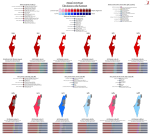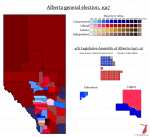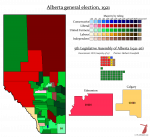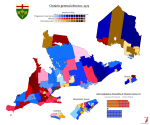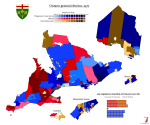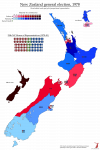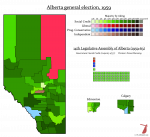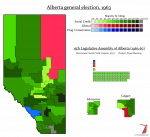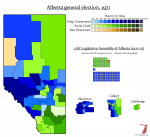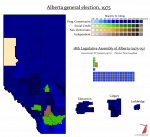Thailand 2019
- Location
- Das Böse ist immer und überall
- Pronouns
- he/him

Someday I may add small parties to the key on the map, today is not that day.Pheu Thai (For Thais) - populist, pro-Shinawatra. The refoundation of the People Power Party, which in turn resulted from the refoundation of the Thai Rak Thai ("Thais Love Thais") Party.
Palang Pracharat (variously translated as "people's power", "citizens' power" or "civil power") - right-wing, pro-military. Effectively the support organisation for the National Council for Peace and Order (NCPO), the military junta that ruled Thailand from 2014 until this election (and still kind of does).
Future Forward Party - centre-left, anti-military. New party for 2019, did better than expected in spite of the, er, dubious circumstances this election was held under.
Democrats - right-wing, royalist, pro-business. Traditionally the main opposition to Shinawatra, seemingly less relevant outside their southern stronghold now that the military's getting into electoral politics on its own.
Bhumjai Thai ("Thai Pride" - no, presumably not that kind) - populist. Largely based in Buriram Province, but polls fairly well across rural north-central Thailand, sometimes well enough to squeak through.
Thai Liberal Party - basically a softer, more centrist version of Future Forward. Won no constituency seats.
Chart Thai Pattana (Save the Thai Nation) - as Bhumjaithai, but with Suphanburi in place of Buriram.
New Economics Party - boy, I wish I knew. Also won no constituency seats.
Prachachart - idfk. EDIT: Very likely a party representing the Muslim Malays of the far south.
Pheu Chart (For the Nation) - Pheu Thai front party, created so the Pheu Thai leadership can jump somewhere if the junta tries to ban their main party. Still won five list seats.
Action Coalition for Thailand - hard-right, royalist, pro-military, pretty questionable on the concept of democracy as such. Right-wing split from the Democrats.
Chart Pattana (Save the Nation) - unclear.
Local Power - pretty much what it says on the tin.
Thai Forest Conservation Party - That's right, a green party in Asia. They seem a bit crap, as they joined the governing coalition after the election, and have repeatedly threatened to pull out over various issues without ever actually doing so.


